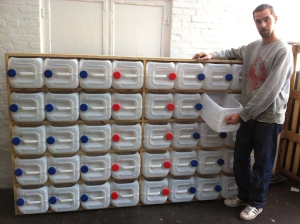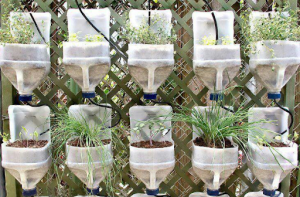Sustainable 3D Printing may sound like a contradiction in terms. After all, there can be excess materials from failed prints and supports, plus there’s the global shipping of raw materials, printers and consumables. Let us not forget the disposal of empty containers!
If you dig a little deeper 3D Printing is making a positive impact on the environment for several reasons. For companies (large and small) to have the ability to 3D print in-house means that potential new products can now be quickly prototyped and refined without having to be done externally. Or worse, sent off to be mass-produced pre-maturely, only to discover a design problem and end up in landfill! Many businesses are incorporating 3D printed parts into their products, as they are customisable and can be produced at a low scale and cost. The ability to 3D print at home allows us to create valuable items which would otherwise need to be massed, produced, packaged and transported from afar. Printing at home can work in your favour if you’re looking to reduce your carbon footprint – and there are other steps you can take as well to embrace a more sustainable 3D printing practice.
We asked Monocure 3D’s founding director Charlie his top tips to help reduce your impact on the planet when you print – including a new ‘refill’ scheme for ResinAway®.
What’s the best way to recycle ResinAway® empty bottles and 5L jugs?
Empty bottles can be recycled in a number of ways. The easiest would be to rinse them thoroughly and put them into your plastic recycling bin for the council to pick up.
Does Monocure 3D accept containers for refill or recycling?
If you live near our headquarters at Regents Park in Sydney, we are trialling a refill service for ResinAway® empty containers.
Bring your empty ResinAway® bottles (all sizes) down for a refill, and we will give you 25% off the RRP for that size.
We can also help with recycling your empties if needed – see below.
Are you planning on doing refills for any other products?
We don’t plan to offer resin refills at this stage due to the difficulty with pre-mixing and UV exposure, but we might consider it for some of our other non-UV sensitive products if the ResinAway® trial works well. If you have empty Resin bottles and want to dispose of them, please feel free to bring them over and pop them in our recycling bin.
What other ways can we reuse/modify bottles or jugs to avoid throwing them away?
Some customers have been pretty creative with making them into plant pots, drawers and scoops! We use our old Jerrys as scoops in our manufacturing process (made by cutting diagonally through the middle of a 5L plastic jerry), and they work well. But we are always keen to hear your ideas for clever ways of upcycling our containers.
PS: We pulled together some pics of the cleverest ideas we’ve seen online for turning jugs and containers into something else – scroll down to the bottom to see.
Speaking of sustainable 3D Printing – what about liquids? What’s the safest way to dispose of unused resins etc?
Unused resin can be dropped to your local council where they collect unused paints etc. Just google where this is for your LGA. Alternatively, you can empty the contents into foil trays and cure them in the sun to be disposed of with solid rubbish.
What are your favourite examples of sustainable 3D printing initiatives you’ve come across?
There are a lot of interesting large scale 3D printing initiatives that aim to reduce plastic waste and solve problems through innovative design.
For example, several projects have explored the use of 3D Printing to create coral-like structures that can be placed in appropriate locations in the sea. The idea is to encourage the growth of natural coral and provide a home for the species which depend on it. The world’s most significant example was designed and printed by a group in Melbourne and submerged in 2018 at a Maldives resort.
There are also companies specialising in recycling plastic waste for 3D Printing of housing, urban infrastructure and even prosthetic limbs, which are inspiring. Overall 3D Printing is greener than people realise. Having the ability to make prototypes for testing before they are mass-produced is massive! Before 3D Printing, products would be sent for mass production before being adequately tested. This mistake could result in 100,000 plastic components that didn’t work (or fit) ending up in landfills. To refine a design without having to make expensive tools and mass produce items is a much more environmentally friendly method than the alternative.
GREAT IDEAS FOR UPCYCLING 5L CONTAINERS



